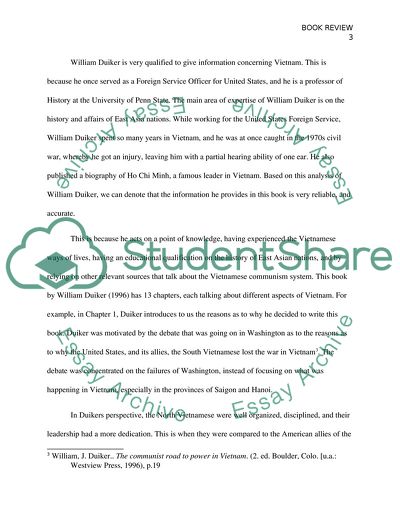Cite this document
(“The Communist Road to Power in Vietnam, 2nd Edition by William J Book Report/Review”, n.d.)
The Communist Road to Power in Vietnam, 2nd Edition by William J Book Report/Review. Retrieved from https://studentshare.org/history/1807569-book-review-on-the-communist-road-to-power-in-vietnam-2nd-edition-by-william-j-duiker
The Communist Road to Power in Vietnam, 2nd Edition by William J Book Report/Review. Retrieved from https://studentshare.org/history/1807569-book-review-on-the-communist-road-to-power-in-vietnam-2nd-edition-by-william-j-duiker
(The Communist Road to Power in Vietnam, 2nd Edition by William J Book Report/Review)
The Communist Road to Power in Vietnam, 2nd Edition by William J Book Report/Review. https://studentshare.org/history/1807569-book-review-on-the-communist-road-to-power-in-vietnam-2nd-edition-by-william-j-duiker.
The Communist Road to Power in Vietnam, 2nd Edition by William J Book Report/Review. https://studentshare.org/history/1807569-book-review-on-the-communist-road-to-power-in-vietnam-2nd-edition-by-william-j-duiker.
“The Communist Road to Power in Vietnam, 2nd Edition by William J Book Report/Review”, n.d. https://studentshare.org/history/1807569-book-review-on-the-communist-road-to-power-in-vietnam-2nd-edition-by-william-j-duiker.


